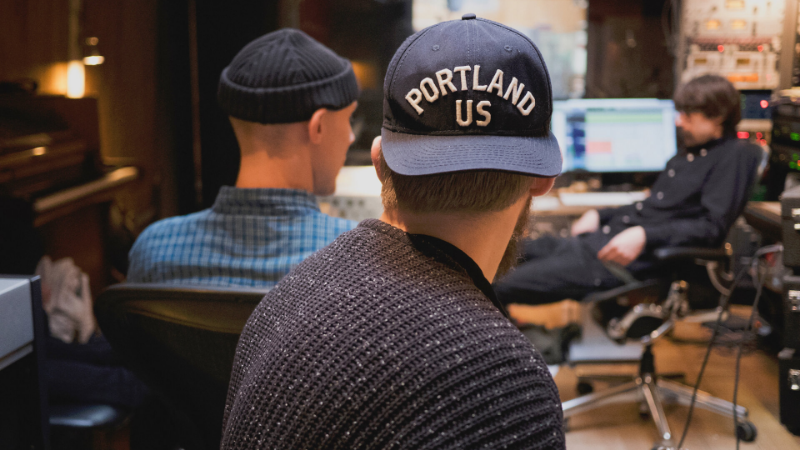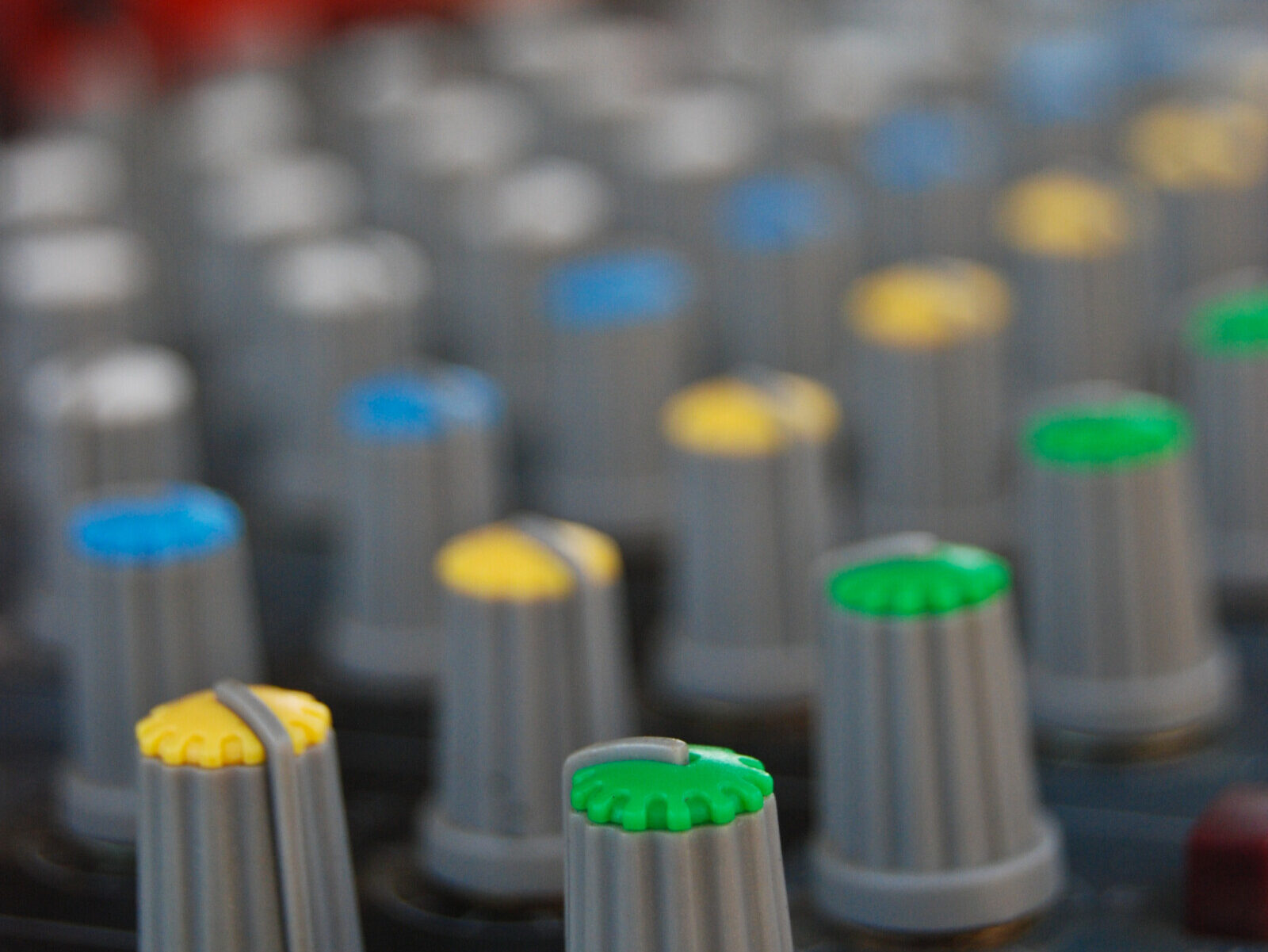
No matter what the Steps of Song Production are and certainly before we discuss any of them, there is a litmus test of sorts that you should answer for yourself… Do you really want this?
A lot of people delude themselves with the idea of making music. They dream about acquiring gear and they talk a big game. They may dabble with parts of songs and bits of ideas but all of that is a far cry from seeing songs through to completion.
To do that consistently, one has to brave vulnerability, and remain relentless. And all of that is quite a bit different than living withinside the safety of daydreams.
Making music is a challenging process of endless choices, decisions, compromises and uncertainties. In addition to that remaining competitive requires an effort to continually increase theory awareness and develop talents. It takes determination.
So, if it isn’t wishful thinking and deep down in your heart of hearts… you know you want this… Then please allow me to be of assistance in helping to fill in some blanks.
A General Grasp
You already have a general grasp of what production is, you are a good musician, and you have some great song ideas of your own. The problem is without any sort of guide to navigate these stages and elements of music production, you simply don’t know where to begin… And that leads to the underlying question about the Steps of Song Production… What are the steps to producing a song?
The steps to producing a song include:
- Concept/Composition
- Arrangement
- Tracking/Recording
- Sound Design/Production
- Editing
- Mixing
- Mastering
Composition
Unlike the steps of song production, writing songs and the method of doing so is a process that can be very difficult to articulate. On the one hand Music Theory does allow for a systematic approach to song craft while on the other hand composition can be so intuitive, stylistic and ethereal that people can excel at it without ever having studied Theory.
In most cases modern popular songs consist of two primary parts, one is lyrical and the other is instrumental. Regardless to which comes first in conception one will surely beget the other so there is no requirements or standard with which to start.
Lyrical Phrasing
On one occasion you may start with a lyrical phrasing and go on to build an instrument bed to compliment it, while on anther occasion you may start with an interesting chord progression that subsequently inspires its lyrical counterpart. It could even be that you navigate the conception of both simultaneously.
Additionally the methods to translate your ideas are interchangeable. You are free to conceive of musical works on any instrument whether melodic or rhythmic.
Ideate the concept then make a simple audio notation of that for safety. Afterwards proceed to build upon the idea.
Chording Changes
At this point the song will exist in some initial state. You will still need to compose the rest. You should include for any melodic or chording changes in song structure as well as prepare additional lyrics for subsequent verse, chorus or bridge that hasn’t already been written for.
When writing lyrics for the second verse, be diligent not to allow those lyrics to be of perceivably less quality then those written for the first. But, if they are, be certain their quality is not less by a lot.
You do not need to work in a linear fashion. You can work inwards to out, or outwards to in. Compose however you wish. Start by writing your chorus first and then work on your verse or start by writing the verse first and then finish the chorus after. Either is fine just as long as when you’ve finished writing each of those parts they flow well from one to the next.
Arrangement
Once you have the concept and composition sorted you’ll need to begin making some temporary decisions about the songs arrangement, these decisions are not yet final and can be revised along the way.
If the concept of the song is the foundation, then the arrangement of the song is the framing. In this step you will be organizing the song’s structure. That refers to choosing the order in which the parts of the song will play. For example a very simple song structure may be as follows:
Intro-verse1-chourus-verse2-chourus-bridge chorus, chorus
By using a DAW as a production tool, experimenting with arrangement is easy. Follow your instincts and shuffle those rudimentary song parts into various orders of arrangement. Listen back to that arrangement and make adjustments as you see fit. Eventually your decisions will begin to take shape and you will settle on the arrangement.
Arrangement Settled
Up until now you have been using guide vocal tracks, guide guitar tracks or something you have composed in your midi sequencer to help you conceptualize the idea of your song and string together it’s structure.
The nature of those guide tracks is not such where they are typically used in the final mix. They were only intended to be temporary reference. They are a tool to navigate and build the songs composition, arrangement and later guide musicians and vocalists inside their headphone mix while tracking and recording the actual parts.
But, before we can get into the nitty gritty of replacing those guide tracks with better-rehearsed performances. We still need to tie up some loose ends.
As of now the arranged parts of the song structure have yet to be coupled or woven together. Compositional elements need to be considered to weave those pieces together and bridge transitions. If your production calls for a lot of midi sequencing, this is where that should begin.
If you’re using electronic drums in your performance, fleshing it out now will serve to inform your vocalist and musicians later when its time for them to record. After this your next focus should be on finalizing instrumentation melodies and choices
Tracking
As all of the work deciding on an arrangement comes to an end, you can feel free to close out that process and set focus on tracking and recording. The first step is to begin working toward some semblance of order. While doing so be sure not to forget about having fun with the process. That joy may even come over in the final product so don’t sleep on the idea of having a good time with it.
After you have cut the fat from the concept and composition, you should be staring at the bare bones of the songs structure. Do yourself an early favor and see to it that you have created and labeled tracks properly for tracking and that those tracks have been positioned in some logical way.
This will lend to workflow optimization. Like-minded tracks should be grouped within proximity of each other. And again, take time to make sure that you have everything labeled appropriately from the hard drives to the individual tracks.
Tracking Instrumentation
If you are not using any electronic elements in your recording or if your music is a combination of these elements than at this point you can get started recording your drums and other musical instrumentation.
Be sure that your room is treated acoustically and that the microphones you use capture signal in a satisfactory manner. By using the correct microphone per source coupled with good mic-ing technique the quality of the recording will improve.
In addition to microphones, be sure that the room is suitable for recording. If your room has not been treated acoustically or if there are electronic devices such as air conditioners and freezers producing audible noise, then you are in for a nightmare when you try to mix your record.
To avoid those kinds of problems, treat the walls and temporarily unplug those machines. Work to record the cleanest tracks possible.
Proper Mic Use
I can’t speak enough about using proper mic-ing techniques throughout all of the song production steps. This is to avoid phasing problems and other trappings that will derail your best effort. If you’re not already competent in this regard make time to get your self up to speed.
Without clean, good quality recordings, there is no clear and realistic path to a professional sounding mix. In the grand scheme of things taking time and being thorough to gain competency with this procedure is the best first step.
After the drums have been captured, continue with recording the other musicians. Strive for getting the best performances from both the bassist and the guitarists. Once you have those tracks accounted for give them a once over and then dial up a nice rough mix for the singer’s headphones.
Loop Record
When it comes to recording the singer you may benefit from using loop record in order to comp your vocals. This sets the DAW in an assignable time loop that spans both a chronological start and end point. The DAW will record a continuous loop from head to tail over and over again
Have your singer work there way through this multiple times. When you have recorded enough passes through and have finally stopped recording. Your vocal track will open up to display the multiple takes in descending order.
Selection will default to the most recent track you have recorded. Now, audition the tracks to decide which one gives you the best version of each word or phrase then click and drag to select what portions you will enable to feed to the comp from each. This process is very intuitive and saves a lot of time.
Of all of the song production steps editing vocal comps can be a lot of fun, so enjoy .At this point you can over dub double vocals and record any harmonies or background vocals you would like.
Sound Design / Production

Another one of the steps of song production is sound design. Sound Design is the process of designing original sounds or patches on virtual or external synths. These patches are designed by manipulating oscillators and filters.
They are then sequenced and recorded as instrument tracks into a recording session. This stage is a cornerstone of EDM, HIP HOP and POP Production and is often a part of ROCK Production as well.
In addition to designing and sculpting individual sounds. This stage would also be inclusive of midi sequencing or beat making which is the production of synthesized instrumental orchestrations that may also include drum sequences.
Editing
The editing steps of the song production process are for cleaning, fixing and adjusting all of the elements that went in to building your session up until this point and before going into the mix. It is not uncommon to have done some editing along the way. But, while a little makes sense, it is better not to make a habit of over doing it.
Cleaning up as you go helps to work efficiently and vocal comps may be necessary for overdubbing. So in those circumstances some editing could be done along the way. But, in order to prevent disrupting the previous steps with too much stop and go it is advisable to keep editing a process onto itself.
Fine Tooth Comb
The editing steps of song production are about going through with a fine toothcomb looking for any outstanding problems.
- You will strip silence from all of your recordings and delete unused tracks.
- You will trim all of your audio files and apply fades.
- You will be sure that all of the crossfades meet at zero level and do not pop.
- You will cut, paste, click and drag any regions that need moved or shifted.
- You will nudge and align notes and regions to account for timing issues
- You will quantize any midi to do the same.
After all of the edits are made you are finally ready to move along to the mix.
Mixing
The mixing steps of song production are the culmination of every previous step. It is so very important that you enter this phase having had done your utmost best to capture the cleanest recordings possible. Any unwanted noise or outstanding problems will only serve to exasperate the process of carrying out your mix.
It’s the mix phase where all of the magic begins to take shape. All of the levels come in to balance and each of the elements fall into place. It is also the phase where all of your technical prowess will come into play.
Mixing is the stage where every individual track we have recorded must be blended, sculpted, leveled, and positioned spatially into the most audibly desirable two track stereo master we have the capacity to mix.
A Lot Of Science
There is a lot of science that goes into doing the mix steps of the song production well. As you progress you can build upon your knowledge with real word experience. In addition to using your time learning all of that be sure to spare some for training your ears to distinguish the miniscule variations of potentiometer adjustments.
Spatial mixing adds width, depth, and height to the mix. It allows the listeners to perceive the music in a three dimensional way as if they were actually there together in the room with the musicians. We create width by panning left or right on a selected track and leaving certain tracks panned to different positions in the stereo field.
We perceive depth when something seems farther away, so applying a special effect like reverb to a vocal and turning the volume down a bit will give the illusion that the sound source is far off in the distance.
A vocal with out any effect at a slightly higher volume level will appear to be much nearer to us. To achieve height use some EQ-ing to roll off the low end to make the source seem to be coming from above and do the opposite to give the perception that it is coming from below.
Automation
In the mixing process we will also apply automation to give a sense of urgency or movement. Fader movements can be recorded or drawn into the DAW. A mix engineer may want to gradually increase the volume of a grouping of tracks in order to swell or exaggerate the intensity.
The Mix engineer records that movement and then moves on to the next task at hand. From then on the DAW will automate those movements robotically in the exact same way the engineer had performed them.
Automation can be applied to almost everything you do inside of a DAW. You can use automation to send signal to an effect, you can use automation to unmute and you can use it to pan. You could have an effect such as a reverb or delay automated to open on a particular track and then you could record panning automation as you turn a potentiometer.
When you play everything back you would hear the effect appear and then notice its transition from one speaker to another. Implementing elements like this give the mix movement and energy.
Mastering

The last steps of song production are in mastering. Mastering is a process to maximize loudness and enhancing certain sonic qualities of the stereo two-track. Applying equalization, compression, and limiting in very specific ways achieves this.
In addition to bringing out the best of the mix and adding loudness these maximization of qualities is necessary to optimize the track for distribution across multiple formats.
If multiple songs are being released in an album or as a collection the mastering process is used to bring a sense of cohesiveness and consistency to the sonic fidelity of that collection.
It is also important that the songs work well together and you have strategically chosen which ones will be included. We have a great article to help inform you about some of the considerations that go into making those decisions. Enjoy the read!
Mastering can be something you can learn, and perform from a home studio to some level of satisfaction. If you are new to the process however it is best to budget in advance to sub out that work to an experienced mastering engineer.
Then try your hand at mastering, if your results are satisfactory to you and your client that’s great you can give yourself a bonus and your artist a discount.
If your results are not up to par simply implement the contingency plan, your artist will be none the wiser.
With time you will figure it all out though, don’t worry.
In Conclusion
Now that you have some insight into the steps that go into producing a song, you should be better able to assess what steps you need to take to get started. In addition to knowing about the steps to produce a song, It is probably wise to aware of the cost breakdown for writing and releasing a song. Here is a link to guide all about that. Have A Read!
No matter what obstacles you face just remember the best trick for success is just not quitting. By being persistent and consistent you can certainly add all of the tools you need to your tool belt. Just take your time and build on experience.
Now go and get to it.
Good Luck!
